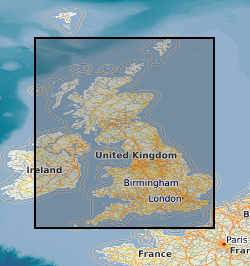PAPER
Type of resources
Available actions
Topics
Keywords
Contact for the resource
Provided by
Years
Formats
Representation types
Update frequencies
Scale
-

Series of reports on Wells and Springs of English counties, Wartime Pamphlets of water wells and published BGS Well Inventories.
-

Register of samples collected from the Carboniferous of southern Ireland together with the Hodson collection. Specimen number, locality and geological horizon given together with some identifications.
-

Collection of reports and general hydrogeological/geological information held in box files by country, almost exclusely by Jeff Davies.
-

Card index with abstraction data for licensed water wells in England and Wales 1948-1963.
-

Card index of hydrogeological references, including "Whitaker" bibliography and material up to 1950s.
-

Microfossils extracted from the original sample to be used as reference specimens. Some have been photographed. Original sample number, name of specimen, locality and geological horizon are given. PK1-378 have been used.
-

Analyses carried out mainly on Conodonts, but includes some foraminifera and ostracods. 10 volumes. Numbers used Mil(C)1-1079. The Carboniferous and Permian are included. Sample no, locality & geological information and in some cases identifications are given.
-

Collection of overseas topographic, geological and hydrogeological maps
-

Reports of 267 mineral exploration projects carried out in the UK under the Mineral Exploration and Investigation Grants Act (MEIGA). Produced by external mineral exploration companies between 1971 and 1984. Includes project files kept on behalf of DTI (Department of Trade and Industry). All reports are held in hard copy and all are now on openfile.
-

Confidential data carried out for hydrocarbons etc.
 NERC Data Catalogue Service
NERC Data Catalogue Service